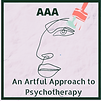
Groups Therapy / Workshops
A big part of group therapy is recognizing that you are amongst people who are experiencing similar emotions and circumstances. Being able to give and receive support from the other members of the group creates a tight bond among the members. By sharing experiences, a sense of empowerment emerges. When art materials are used within the group experience, it creates a space for a flow of creative energies encouraging self-expression ideas, emotions, reflection, and transformation.
Please note NO ARTISTIC SKILLS ARE REQUIRED.
AN open mind is all you need.
One of the most enjoyable aspects of being an art therapist, for me, is to facilitate Group therapy. Whether it be group art therapy or group therapy.

Group Art therapy for your Workplace:
“Often the hands will solve a mystery (problem) that the intellect has struggled with in vain.” C. G. Jung
Group art therapy can be used as a means of motivation and inspiration. Taking time to be creative with your work colleagues can reduce stress, promote relaxation, and help solve problems. Group art therapy assists individuals in better understanding and valuing their peers.
Creative process assists with being able to recognize alternative perspectives, including identifying new problem-solving solutions. Therefore, art therapy is especially useful in cases where traditional “talk therapy only” psychotherapy has been ineffectual. This is because art involves the brain and the body in ways that verbal language does not.
Group Art therapy for School Students
Pre-schoolers, and teens, special needs and not, may not have the language skills to express themselves. Art therapy group work can give them their voice. It helps them to discover who they are how to engage their senses resulting in a change from a negative to a positive mindset.
Sharing their feelings through a poem, song and painting within a group setting gives a safe outlet for emotional expression which accelerates the healing and growth process.
Benefits of Art Therapy Groups for school students.
-
Build positive connections and a sense of belonging
-
Realise that you are not alone with your issues
-
Improve social skills and learn ways to deal with big emotions
-
Build resilience and confidence
-
Learn new coping strategies and problem-solving skills
-
Deepen self-awareness and self-expression through the use of art
-
Be more aware of own strengths


Group Art therapy for adults.
Many people who experience art therapy for the first time are surprised at the way it opens them up to new forms of treatment.
What art therapy is not is something that has strict rules. When someone was young, they may have been told that colouring within the lines was a sign of growth, that maturity meant structure. Unfortunately, this was often bad advice, and not only limited the creative side of the brain but may have worked to turn people off to the creative process. Art therapy works to undo this thinking and open all sorts of possibilities. It is not uncommon for someone who fears, or thinks that they are really bad at art, to realize its healing power once the right materials are given to them for expression.
THE THERAPEUTIC FACTORS OF GROUP THERAPY AND APPLICATION TO GROUP ART THERAPY
Yalom’s therapeutic factors seen below, are what the outcome of joing a group therapy should be.
01
Universality
To know that others have similar experiences as you.
02
Altruism
When members help each other, they begin to feel a sense of value and purpose.
03
Instillation of hope
Group members can learn from others who have gone through life’s challenges and know that there is hope in recovery and support.
04
Imparting information
Understanding the stages and struggles of recovery from can reduce anxiety.
05
Corrective recapitulation of the primary family experience
Understanding how our past relationships influence our current ones can be liberating. In group therapy, members can learn how to identify these patterns and avoid repeating unhelpful, or even toxic, past interactive patterns in present-day relationships.
06
Development of socializing techniques
The group provides a safe and supportive environment for members to take risks.
07
Imitative behavior
One way in which group members can develop social skills is through modeling in which, group members observe and imitate the therapist and other group members.
08
Cohesiveness
Group cohesiveness is an instinctive need to belong, and personal development can only take place in an
interpersonal context.
09
Existential factors
Typically apply to learning that one has to take responsibility for one’s life and the consequences of one’s
decisions.
10
Catharsis
Catharsis is the experience of relief from emotional distress through the free and uninhibited expression of emotion. Have you ever scribbled on a piece of paper hard? It can be both exhausting and enlivening at the same time – this is a cathartic experience. In addition to increasing creating physical energy from making art, when members tell their story to a supportive audience, they can obtain relief from chronic
feelings of shame and guilt.
11
Interpersonal learning
Group members achieve a greater level of self-awareness through the process of interacting with others
in the group.
12
Self-understanding
– This factor overlaps with interpersonal learning but refers to the achievement of greater levels of insight
into the genesis of one’s problems and the unconscious motivations that underlie one’s behaviour hold facets of a personal story, ready to be mined through a relative, therapeutic.

